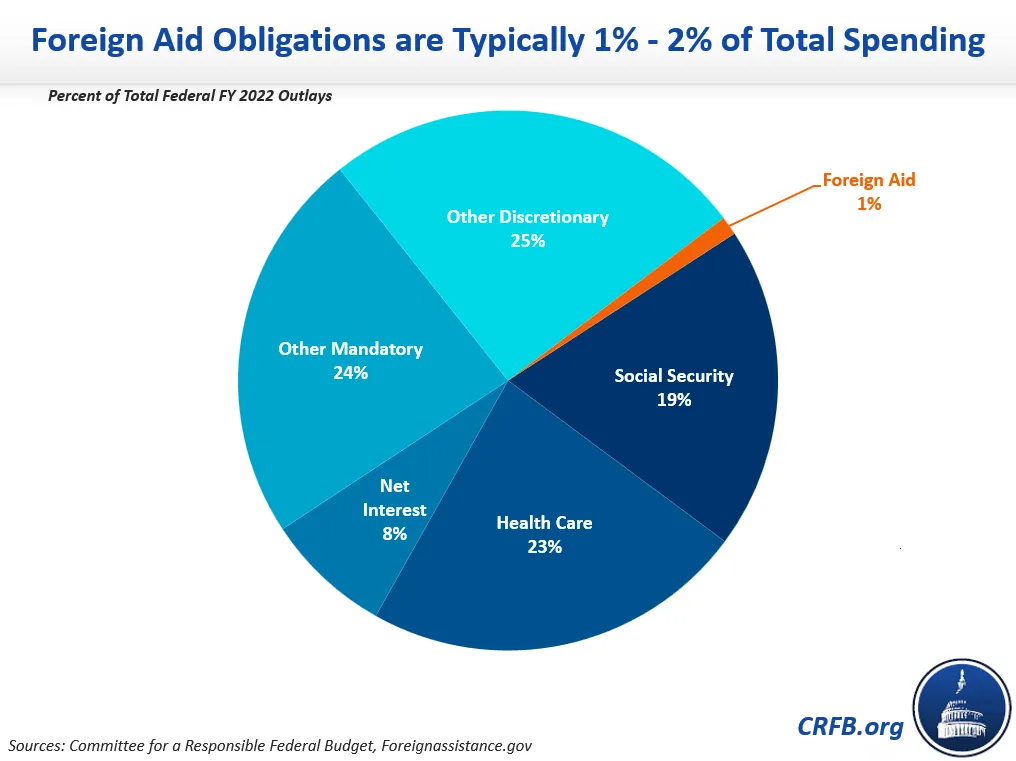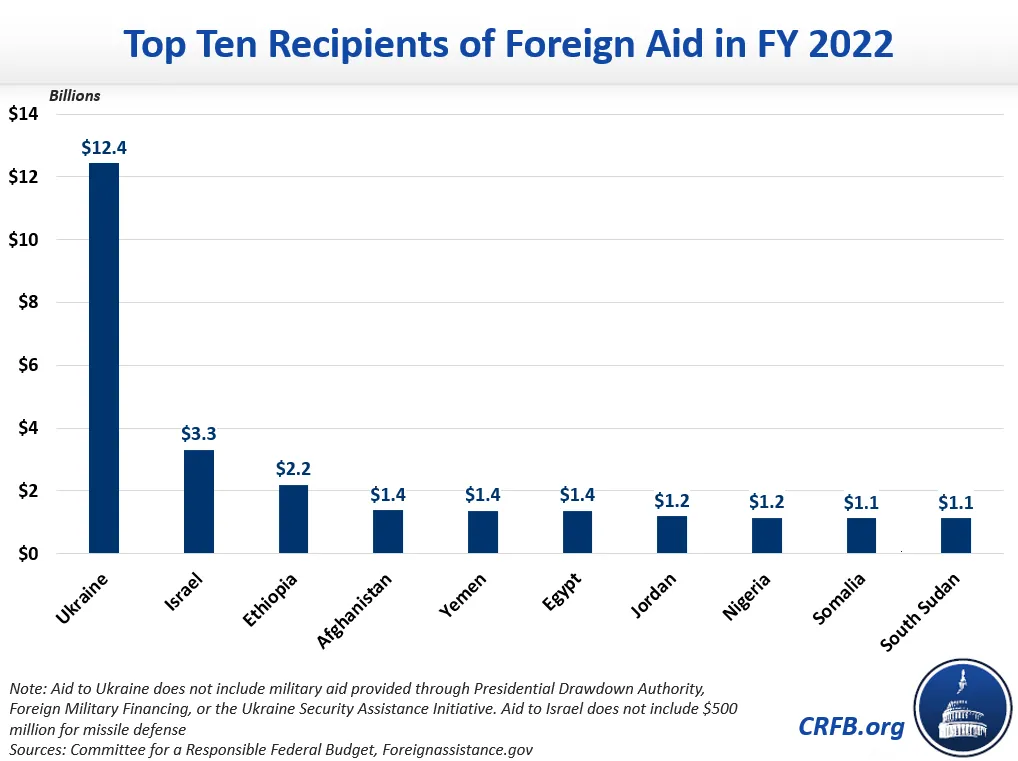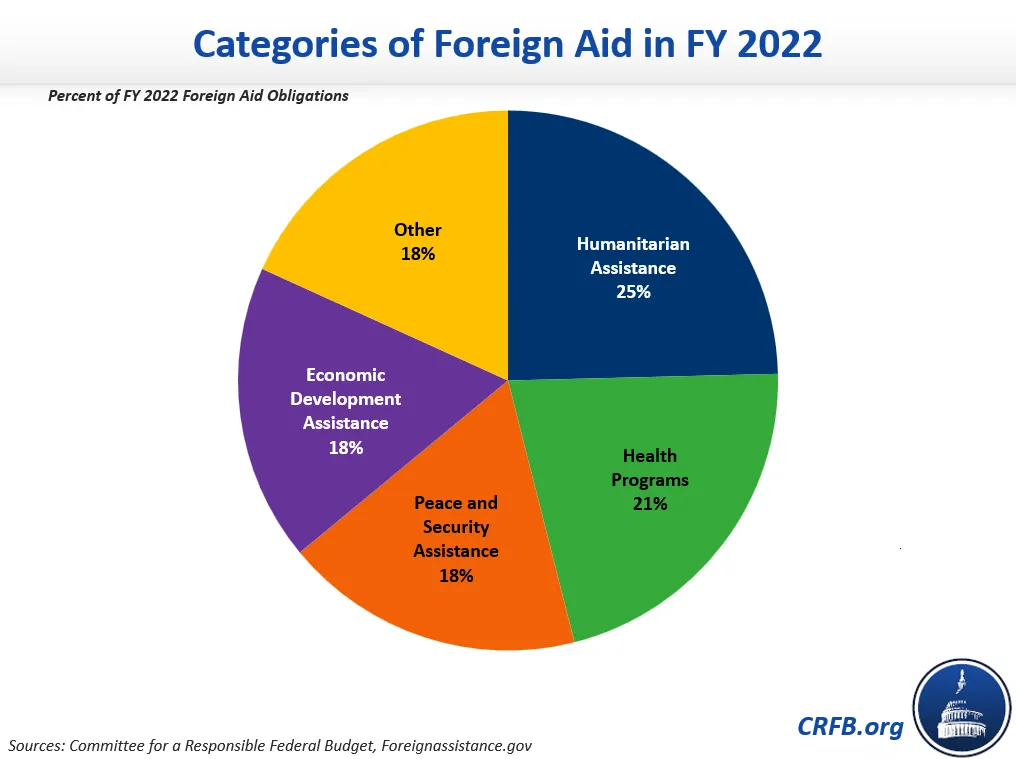A Breakdown of Foreign Aid Obligations
With policymakers considering supplemental appropriations for Ukraine, Israel, and other foreign policy needs, many are wondering how much of the federal budget is dedicated to foreign aid. In Fiscal Year (FY) 2022, the federal government obligated a total of $70.4 billion in foreign aid, about 1 percent of total spending. This share is consistent with trends over the past 20 years, with foreign aid obligations averaging less than 2 percent of total federal spending.

In FY 2022, Ukraine was the largest single-country recipient of aid receiving $12.4 billion, followed by Israel ($3.3 billion), Ethiopia ($2.2 billion), Afghanistan ($1.4 billion), Yemen ($1.4 billion), Egypt ($1.4 billion), and Jordan ($1.2 billion). Regional and global categories also topped the list, with worldwide programs receiving $16.6 billion in obligations led by the sub-Saharan African region receiving $1.5 billion and the Middle East and North Africa region receiving $1.2 billion.

The four biggest pieces of the foreign aid budget are humanitarian assistance (25 percent), health programs (21 percent), peace and security assistance (18 percent), and economic development assistance (18 percent). The remaining eighteen percent covers multi-sector assistance; program support; initiatives promoting democracy, human rights, and governance; education and social services support; and environmental protection programs.

Most foreign aid programs are funded through discretionary spending, primarily through the State-Foreign Operations appropriations bill (smaller amounts are funded through various other appropriations bills, including the Financial Services, Agriculture, Interior-Environment, and Energy-Water appropriations bills). For FY 2024, State-Foreign Operations are currently being funded at the FY 2023 level under a continuing resolution that expires on February 2.
While base discretionary funding covers most of the foreign aid obligations, these programs have received extra funding through a series of supplemental emergency funding bills over the past two years – driven primarily by the Russian invasion of Ukraine, but also to help with migration and refugee assistance after the U.S. ended military operations in Afghanistan.


